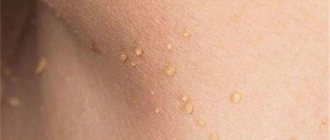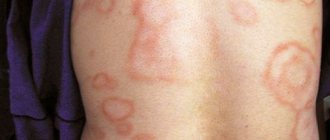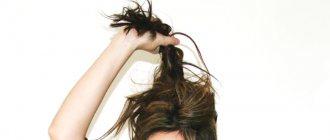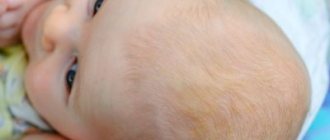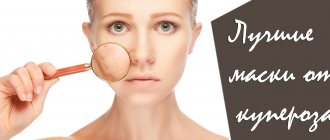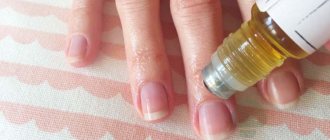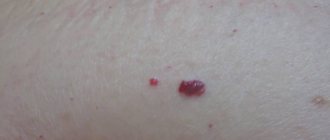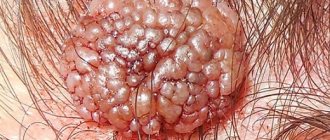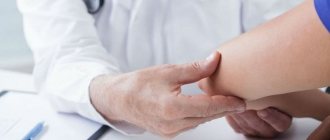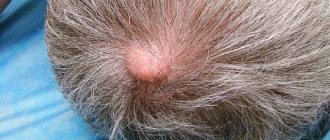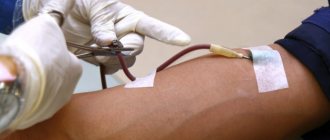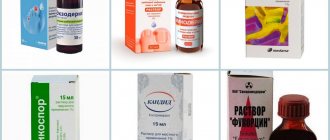Rubrophytia or rubromycosis belongs to the category of fungal dermatological diseases, which are characterized by an acute clinical picture of their course with simultaneous damage to various parts of the body. First of all, the fungal infection is localized on the skin of the hands, the sole of the foot, the back, the groin, and the outer and inner thighs. In advanced forms of rubrophytosis and the absence of adequate drug treatment, the disease quickly spreads to other parts of the body and can cover up to 85% of the patient’s epithelial surface.
Mechanism of infection by rubromycosis
The main cause of damage to the human body is the fungus Tr. Rubrum. The mechanism of infection is quite simple - transmission of infection occurs through contact with a carrier of microorganisms. Pathogenic fungi are highly active, so you can become infected by using common household items. Doctors identify several other causes of rubromycosis:
- the use of hormonal drugs, antibiotics and cytostatics. As a result of long-term use of these drugs, the body becomes weak and loses its defenses. As a result, viruses, bacteria and fungi easily penetrate the human body, spread throughout it, and affect vital systems and internal organs;
- weakening of blood vessel tone. This factor causes fungal spores to quickly spread throughout the body, causing intoxication;
- weakening of the immune system. Hypothermia, intense sports, nervous and physical stress, lack of sleep and vitamins are the reasons why the body becomes weak and cannot independently repel attacks of viruses, bacteria and fungi;
- visiting the swimming pool, showers, public baths without personal shoes. When the foot comes in contact with the foot, the fungus can easily enter the body and cause infection. If the skin of the feet is covered with cracks, the risk of developing rubromycosis increases. The same applies to excessive sweating.
Risk factors include: diabetes mellitus, chronic diseases of internal organs, metabolic disorders, obesity, HIV infections and AIDS, cancer, and the recovery period after organ transplantation.
Treatment of the disease is complicated by frequent relapses, so it takes a long time, but in most cases it ends well. After an illness, immunity to it is not developed, so the likelihood of “catching” rubromycosis always remains.
Nutrition and prevention
When dealing with fungal diseases, it is very important to eat properly, as some foods can provoke the growth of the fungus. Therefore, everyone who suffers from a fungal infection must follow these recommendations (rules):
- It is necessary to give up baked goods (especially freshly baked ones).
It is important to eat less sweet foods (including confectionery and overly sweet fruits), since glucose is food for the fungus.- It is necessary to give up any alcoholic beverages.
- The food in the diet should be rich in vitamins and other beneficial substances.
- You should avoid spicy, smoked and fried foods.
- It is necessary to observe the drinking regime. The water must be purified (you should drink at least 2 liters per day).
It is also important to know which foods should be excluded from the diet (reduce the amount consumed):
- sugar (as well as any sugar-containing products, including fruits);
- honey, jam and ice cream;
- baking;
- yoghurts with various fillings;
- wheat flour bread;
- juices, carbonated drinks, kvass, etc.
You need to add (or increase the amount consumed) the following products to your diet:
- yoghurts (without any additives, preferably prepared independently);
- dairy products;
- eggs (in any form);
- citrus fruits, sour berries, fruits and vegetables;
- crackers, bread, baked goods without yeast;
- porridge (buckwheat, rice, etc.);
- lean meats;
- cereals;
- seafood and low-fat fish, seaweed;
- nuts;
- salads;
- fresh vegetables.
A balanced diet is part of the therapy, but in addition to this, it is necessary to maintain physical fitness, give up bad habits, and increase the body's defenses.
A patient with rubromycosis must also understand that this disease is contagious, so it is very important to take preventive measures to protect relatives from infection:
- Underwear and bed linen must be changed daily (several times a day if necessary).
- All linen should be washed with sodium bicarbonate (soda).
- Washed laundry should be ironed (this way fungal spores are destroyed).
- The patient should not use other people's things (clothes, towels, etc.).
- Contact with healthy family members should be limited.
You should be especially careful if a child lives in the patient’s home. Rubromycosis in children has the same unpleasant manifestations, but develops much more rapidly.
Clinical manifestations of rubromycosis
When infected with the fungus Tr. Rubrum 90% of cases are rubrophytosis of the feet and nails. Immediately after infection, the symptoms of the disease appear very weakly or not at all, so the person may not even suspect that he is sick. At the end of the incubation period, rubromycosis manifests itself quite clearly:
- the skin of the interdigital folds and soles becomes compacted, overdried and inflamed. Furrows, irregularities and skin patterns are clearly visible on it;
- floury peeling appears over the entire surface of the affected area - as if the skin was sprinkled with flour. In the area of the furrows, changes of this type become more pronounced;
- If treatment is not started in a timely manner, rubromycosis extends beyond the affected area and spreads to the fingers, dorsum of the hands and feet, resulting in rubromycosis of smooth skin. The nail plates are affected if rubrophytia takes on an advanced form. In children, exudation occurs - tissue inflammation as a result of the filling of blood vessels with excess fluid. This process complicates the course of the disease and diagnosis;
- Rubromycosis of the hands is a consequence of self-infection. In this case, fungi do not enter the body from the outside; they are already in the body in a latent state. Symptoms of the disease are similar to rubromycosis of the feet, but less pronounced;
- if the fungus penetrates the nail area, then all plates are affected almost simultaneously. Rubromycosis of the nails manifests itself in thickening of the nail, the appearance of yellow or white stripes on the edges of the nail, crumbling and brittleness. The nail may become curved and bulging. An atrophic form of the disease may develop. In this case, the nail plate slowly deteriorates, becoming thin, brittle and lifeless. Usually a small part of the nail remains near the roller, but in some cases the nail is completely separated from the bed.
The listed signs are individual and may or may not be observed depending on the human body, the form and stage of the disease.
Occurrence of disease
The causative agent of the disease is a parasitic fungus called Trichophyton rubrum. Once it reaches the surface of the skin, it quietly exists on it for years and does not manifest itself in any way. The provoking factor for increased activity of Trichophyton rubrum and the onset of disease development is considered to be:
- increased humidity (sweating feet);
- endocrine diseases;
- weak immune system.
This infection accounts for about 85-90% of the number of causative agents of mycosis of the feet existing today.
Generalized rubromycosis
Generalized rubrophytosis is a condition when, after a long-term local lesion, rubromycosis transforms into a new form. This is facilitated by:
- diseases of internal organs;
- failure of the nervous and endocrine systems;
- long-term use of antibiotic drugs;
- lack of treatment for localized forms of the disease;
- trophic changes in the skin.
Generalized rubromycosis exists in erythematous-squamous and follicular-nodular forms. In the first case, the disease can be easily confused with atopic dermatitis or eczema, parapsoriasis. The lesions form rings, garlands, and semi-arcs. The disease is accompanied by severe itching and worsens in the warm season. It can only be diagnosed by careful examination and analysis of scrapings.
With the follicular nodular form, deep damage occurs to the forearms, buttocks, feet, hands, legs, and knees. In terms of external signs, the disease resembles lupus erythematosus, erythema nodosum, and vasculitis.
Reasons for appearance
One of the leading causes of calluses on the heels is tight, uncomfortable shoes. With constant pressure, the skin dies and thickens. The result is a callus.
Circumstances accompanying the appearance of a callus may be:
- flat feet;
- jogging;
- presence of skin diseases;
- increased sweating on the legs.
Let's consider each type separately.
We will also point out the features of their treatment at home, using pharmaceutical drugs and traditional medicine, and clinical methods of removal.
Wet or water
They look like a vial filled with a clear, colorless liquid. Appears where the skin is pressed or rubbed by too tight, narrow shoes. The skin rubbed by the shoes falls off and becomes the top layer of calluses.
Dry
It is a trampled layer of dead skin flakes, the thickness of which constantly increases. It may appear as a simple blister that bursts, and the dried skin underneath becomes keratinized.
When the calluses are thick, they burst and become covered with painful cracks. Possible suppuration of the cracks that appear.
Root or taproot
In appearance, it is almost no different from a dry callus. The rod contributes to damage to muscles and tendons. The development of joint diseases is possible.
Preparatory stage of treatment of rubromycosis
The first stage of treatment for rubrophytosis is preparatory. At this time, it is necessary to peel off the skin.
For skin detachment, Arievich ointment is used. This ointment is prescribed for contraindications to the use of systemic antifungal drugs based on ketoconazole and to improve the effect of local treatment. The drug contains 6 g of lactic acid, 12 g of salicylic acid and another 82 g of petroleum jelly as an excipient. Removal of the stratum corneum is carried out as follows:
- Immerse your feet in a bath of 5% soda solution and steam for 5-10 minutes.
- Apply a sufficient amount of ointment to the affected area and wrap with cellophane film or parchment paper. Leave the ointment on for 24 hours.
- Remove the top layer of the epidermis. If the procedure was carried out successfully, then there will be no difficulties in removing the stratum corneum.
- If the procedure was not successful, it is recommended to apply the ointment for another 24 hours, but in double concentration.
To consolidate the result or as an alternative, it is recommended to use lactic-salicylic colloid. This is a mixture of 10 g of lactic and salicylic acid and 80 g of colloid. The affected area is lubricated 2 times a day for 8 days. When the course of treatment is completed, baths with a solution of soap and soda are used. Exfoliated skin is carefully cleaned off with pumice.
Diagnosis of the disease
Skin diseases often raise doubts when trying to identify them with the naked eye. Therefore, only a qualified specialist can determine the cause of the pathology.
Diagnosis of rubrophytosis is carried out on the basis of the clinical picture and the results of a microscopic examination of the affected material:
- nail plate;
- scales;
- vellus hair.
To confirm or refute the diagnosis, doctors additionally conduct research to identify the specific causative agent of the disease - red trichophyton.
Treatment of rubrophytia
Rubrophytia should be treated comprehensively and include etiotropic, symptomatic and pathogenetic therapy. First aid should be external. The following tools and methods are used for this:
- in case of severe inflammatory processes, lotions (compresses) from a solution of resorcinol (25%), silver nitrate (0.25%), boric acid are used;
- If blisters form on the skin, carefully prick them with a sterile needle. After this, treat the area where the blisters used to be with brilliant green solution, Castellani paint (Fukortsin) or another aniline dye;
- etiotropic (antibacterial) treatment is carried out using antimycotic ointments. These include: Zalain, Lamisil, Travogen;
- if severe inflammation is accompanied by a secondary infection, the doctor prescribes corticosteroid ointments and creams. Complex therapy includes antimycotic drugs: Travocort, Triderm, Gentriderm;
- for “wet” skin, Nitrofungin-Neo is prescribed. This medicine is available in the form of a spray or solution and is aimed at drying out the lesions.
When using products, be careful, follow the instructions and do not overdose. Otherwise, you may cause allergic reactions or dry out your skin.
Systemic therapy
Rubromycosis of the feet, skin and hands is treated with antimycotic (antifungal) drugs. These include: Mycozonol, Lamisil, Clotrimazole, Castellani liquids, Nitrofungin and other agents. If the nail plates are damaged, treatment should be comprehensive and include taking medications (tablets and capsules):
- Lamisil. Taken once a day (250 mg). The course of treatment is 6-12 weeks and up to 30 weeks if the patient is diagnosed with rubrophytosis of the nails in the foot area. Auxiliary treatment in the form of local medications is not required - taking Lamisil is sufficient;
- Orungal. Prescribe 400 mg of the drug orally once every 24 hours. The duration of therapy is 7 days, after which a break is taken for 3 weeks. After the break, taking the pills must be repeated: for fungus on the hands - 1 time, on the feet - 2 times;
- Griseovulvin. In the first month, take 6-8 tablets per day, in the second month - 6-8 tablets every other day. Then, it is recommended to take medications twice a week as maintenance therapy. This must be done until the nail is finally replaced by a healthy one;
- Nizoral. Take 1 tablet (200 mg) per day. The course of treatment is 6-8 months. It is recommended to combine the drug with the use of local medications.
Before using any medications, consult your doctor.
Preventive measures
To prevent the development of fungus , you should follow all the rules of personal hygiene, periodically disinfect bedding and underwear, and also keep your shoes and clothes clean.
After a shower or bath, dry your fingers thoroughly, leaving no moisture between them. Use only your own shoes in the bathhouse and sports locker room; never walk barefoot in public places.
After treatment for rubrophytia, a person remains under the supervision of a doctor for another year, so it is necessary to undergo follow-up examinations every three months.
Originally posted 2018-07-04 12:48:18.
